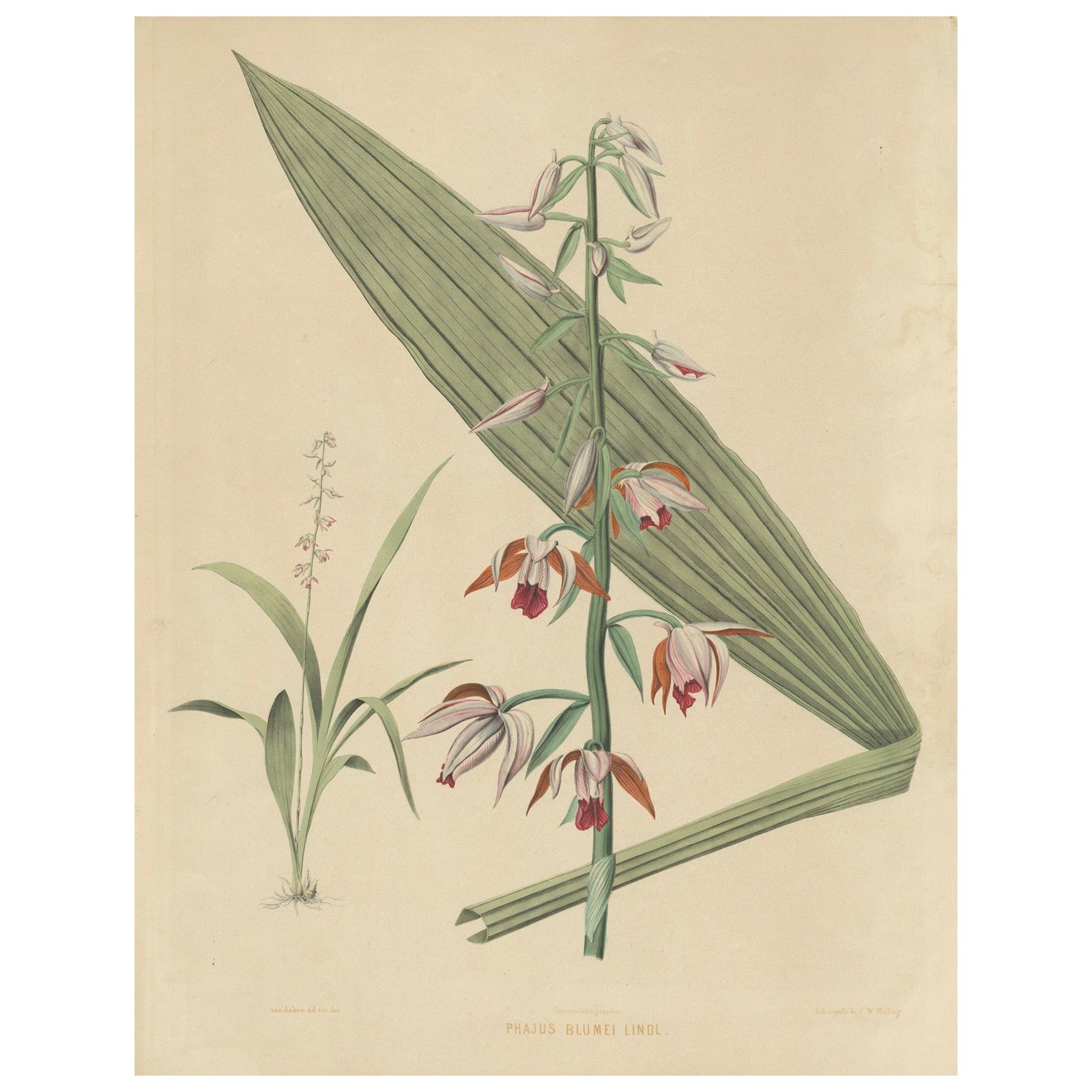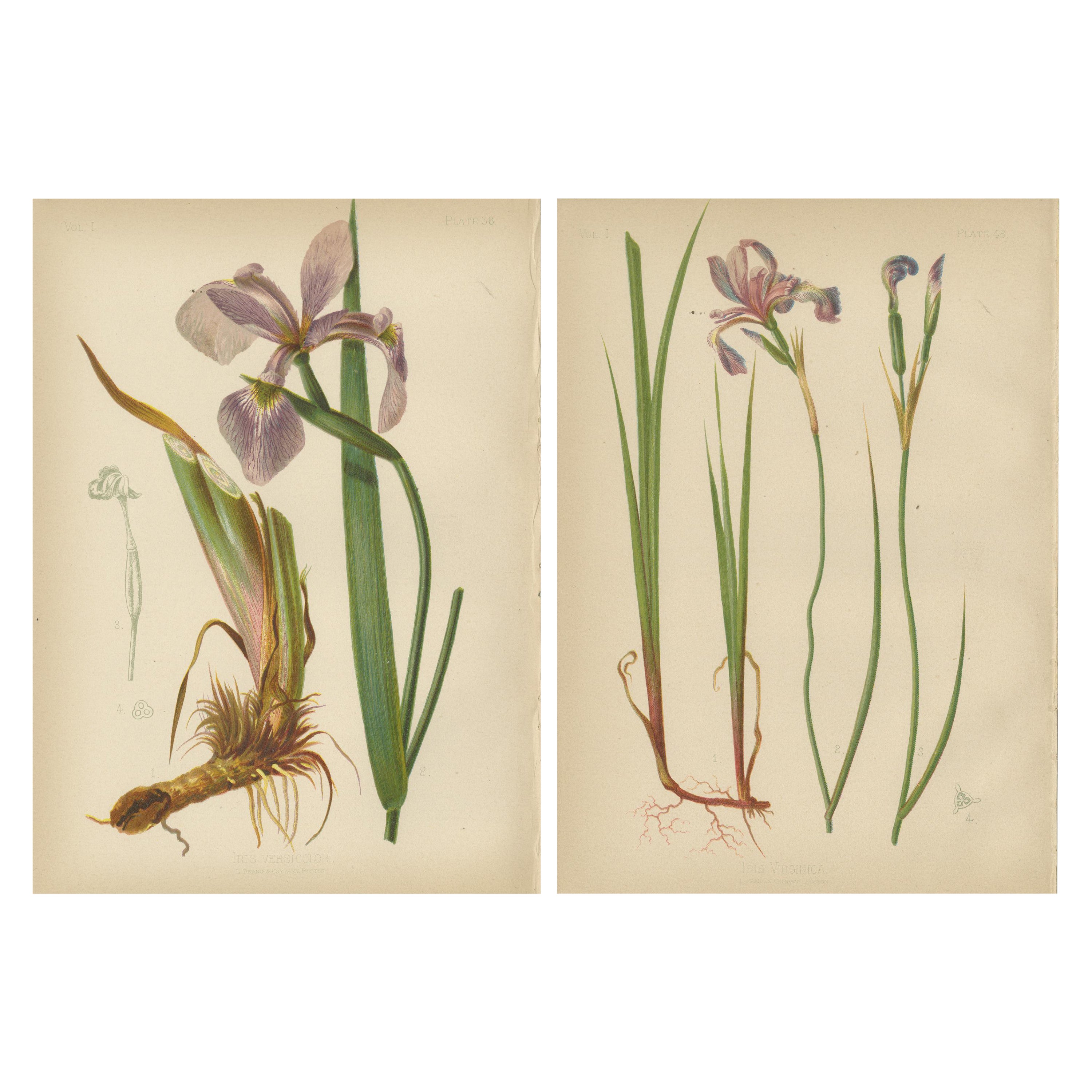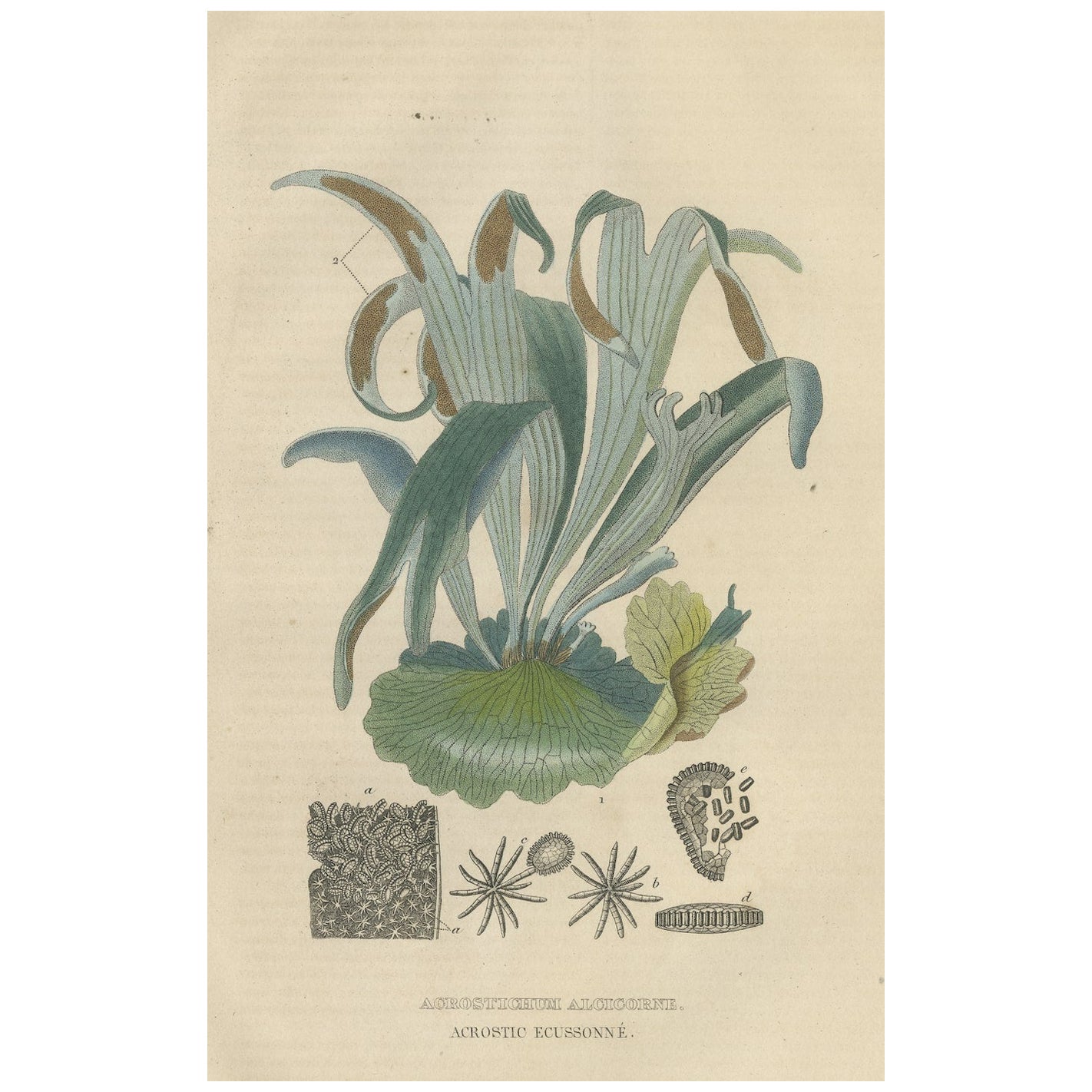Items Similar to The Delicate Predator: Botanical Illustrations of Drosera, 1777
Want more images or videos?
Request additional images or videos from the seller
1 of 7
The Delicate Predator: Botanical Illustrations of Drosera, 1777
About the Item
The plant depicted in the illustration is identified as "Drosera rotundifolia," which is commonly known as the round-leaved sundew. It is a species of sundew, a carnivorous plant that captures and digests insects using sticky, glandular leaves.
This illustration is from "Flora Londinensis", which was a comprehensive study of the plants found in the vicinity of London around the 18th century.
It was initially authored by William Curtis. The illustrations for this work involved several artists over time, including Sydenham Edwards, James Sowerby, and William Kilburn, among others. However, the specific artist responsible for this particular illustration of Lotus corniculatus is not stated. More research is needed. It would typically be one of the artists who regularly contributed to Curtis's publications. To determine the exact artist, one would need to refer to the specific volume and edition of "Flora Londinensis" in which this illustration appears, as the artist might be credited therein.
The text accompanying the image describes the botanical characteristics of this plant, which includes details about its roots, stalks, leaves, flowers, and seeds. It is a detailed botanical depiction, with notations pointing to various parts of the plant to aid in identification and understanding of its structure and form. Birds-foot Trefoil is known for its use in medicine, agriculture, and other fields, as noted in the text.
It is a hand-colored engraving from the "Flora Londinensis". This kind of print was commonly made in the following way during the 18th century:
1. **Engraving**: The illustration would have been carefully engraved onto a metal plate, typically copper, by a skilled craftsman.
2. **Printing**: Ink would then be applied to the plate, and it would be pressed onto paper to create the print.
3. **Hand-Coloring**: After printing, the black and white image would often be hand-colored by an artist using watercolors.
This process allowed for high detail in the prints and individual color application, making each print unique. It was a labor-intensive method commonly used before the advent of color printing technology.
More specifics about the plant:
Drosera rotundifolia, commonly known as the round-leaved sundew, is a small, carnivorous plant that grows in bogs, fens, and other wet, acidic soils. Here are some specifics about its habitat and characteristics:
**Habitat:**
- **Geographical Distribution:** The round-leaved sundew is found in Europe, Asia, and North America. It has a circumboreal distribution, meaning it is found throughout the northern parts of the Northern Hemisphere, particularly in temperate regions.
- **Environment:** It thrives in open, sunny, wet environments where the soil is poor in nutrients, especially nitrogen. This is why the plant has adapted to obtain nutrients by catching and digesting insects.
**Characteristics:**
- **Leaves:** The leaves of Drosera rotundifolia are round, hence its common name, and covered with sticky hairs that secrete a dew-like substance. This substance glistens in the sun, attracting unsuspecting insects. When an insect becomes ensnared, the leaf slowly curls around the prey to digest it.
- **Flowers:** It produces small, white to pink flowers on a single, slender stalk that rises above the basal rosette of sticky leaves.
- **Growth:** It is a perennial plant, regrowing each spring from a root system that includes a central, vertical rhizome and fibrous roots.
- **Propagation:** Seed dispersal occurs through the wind, and the plant can also reproduce vegetatively through leaf cuttings.
**Adaptations:**
- The round-leaved sundew has evolved several adaptations to survive in nutrient-poor environments. The most notable are the sticky glands on its leaves that trap insects, which are then digested to supplement the plant's nutrient intake.
**Conservation:**
- In some areas, Drosera rotundifolia is considered rare or threatened, largely due to habitat destruction, such as the draining of wetlands and peat bogs for agriculture or development. Conservation efforts are important to preserve its natural habitats.
- Dimensions:Height: 19.18 in (48.7 cm)Width: 11.3 in (28.7 cm)Depth: 0 in (0.02 mm)
- Materials and Techniques:Paper,Engraved
- Period:1770-1779
- Date of Manufacture:1777
- Condition:Good, given age. General age-related toning and/or occasional minor defects from handling. Please study scan carefully. Comes with double sided text leave.
- Seller Location:Langweer, NL
- Reference Number:
About the Seller
5.0
Platinum Seller
These expertly vetted sellers are 1stDibs' most experienced sellers and are rated highest by our customers.
Established in 2009
1stDibs seller since 2017
1,922 sales on 1stDibs
Typical response time: <1 hour
- ShippingRetrieving quote...Ships From: Langweer, Netherlands
- Return PolicyA return for this item may be initiated within 14 days of delivery.
More From This SellerView All
- Large Orchid Illustrations of the Dutch East Indies: A Botanical Heritage, 1854Located in Langweer, NLA large and rare original chromolithographic plate from a significant 19th-century botanical work on orchids from the Dutch East Indies (now Indonesia). It is taken from the book t...Category
Antique 1850s Prints
MaterialsPaper
- Large Original Antique Botanical Illustration of the Plectocomia Elongata, c1860Located in Langweer, NLThe artist of this original antique print is Georges Severeyns, often referred to as G. Severeyns. He was a Belgian lithographer and botanical illustrator active in the 19th century....Category
Antique 1860s Prints
MaterialsPaper
- Large Masterpiece of Botanical Illustration from the Dutch East Indies, 1854Located in Langweer, NLA large chromolithograph botanical illustration, featuring the orchid species Phaius blumei Lindl. The print comes from the 19th-century work "Illustrations d'orchidees des Indes Ori...Category
Antique 1850s Prints
MaterialsPaper
- Elegance of the American Iris: Botanical Illustrations by Thomas Meehan, 1879Located in Langweer, NLThis original antique artwork for sale reflects the meticulous work of Thomas Meehan, and the images were published by L.Prang and Company in Boston, known for their exquisite chromo...Category
Antique 1870s Prints
MaterialsPaper
- The Golden Leather Fern - An Antique Masterpiece of Botanical Illustration, 1845Located in Langweer, NLAn antique botanical engraving of the Acrostichum Aureum, also known as the Golden Leather Fern, though the text "Acrostic ecussonne" may ...Category
Antique 1840s Prints
MaterialsPaper
- Orchid Elegance: Masterpieces of Botanical Illustration from 1904Located in Langweer, NLThe collage comprises three detailed botanical illustrations from Walter Müller's 'Abbildungen der in Deutschland und den angrenzende Gebieten vor...Category
Antique Early 1900s Prints
MaterialsPaper
You May Also Like
- Italian Contemporary HandPainted Botanical Print L'Illustration Horticole 3 of 6Located in Scandicci, FlorenceOne of six hands watercolored and press printed botanical print. Each print is entirely printed and colored in Italy by our master craftsmen. The complete set can be viewed on our pa...Category
21st Century and Contemporary Italian Prints
MaterialsPaper
- Pair of 18th Century Johann Wilhelm Weinmann Botanical IllustrationsBy Johann Wilhelm WeinmannLocated in New York, NYThese two precious botanical illustrations were created circa 1720 by the botanist and apothecary Johann Wilhelm Weinmann (1682-1741). They are ...Category
Antique 1720s Prints
MaterialsGlass, Wood, Paper
- 4 botanical illustrations from ‘Bilder ur Nordens Flora’ by C. A. Lindman.By Carl Axel LindmanLocated in Eskilstuna, SEHand-coloured botanical illustrations from ‘Bilder ur Nordens Flora’ by C. A. Lindman. The same illustrations were used in the famous Cabinet ”Flora” by Josef Frank for Svenskt Tenn....Category
Early 20th Century Swedish Art Deco Prints
MaterialsPaper
- Botanical Print of The Californian Sunflower, Louis van HoutteLocated in Downingtown, PABotanical Print of Helianthus Californicus Insignis, The Californian Sunflower, Flore des serres et des jardins de l'Europe, Louis van Houtte. (1810-1...Category
Antique Mid-19th Century Belgian Victorian Prints
MaterialsPaper
- Original 1750s Antique Botanical Print of Echinops - The Gardener’s DictionaryLocated in Montréal, CAEchinops. Upper Right: Pl. CXXX. Lower Left: R. Lancake delin. Lower Center: Publish'd according to Act of Parliament by P. Miller Novem. the 30th 1756. Lower Right: I. S. Miller Scu...Category
Antique Mid-18th Century British Prints
MaterialsPaper
- Original 1750s Antique Botanical Print of Salvia - The Garderner’s DictionaryLocated in Montréal, CASalvia. Upper Right: Pl. CCXXV. Lower Left: I. Miller delin et Sculp. Lower Center: Publish'd according to Act of Parliament by P Miller April 21. 1758. Author: Philip Miller Source ...Category
Antique Mid-18th Century British Prints
MaterialsPaper





